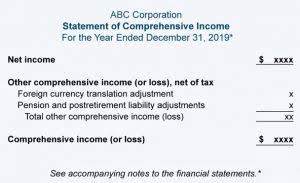
At the end of the accounting period, these items would be consolidated and posted into one line item in the general ledger. This sounds like a lot of work, but it’s necessary to keep an accurate record of business events. You can think of this like categorizing events into specific and broader relevant groupings. For example, journals are transferred to subsidiary ledgers then transferred to the general ledger.
What is Posting in Accounting?

To eliminate posting, a legacy accounting system would need to be completely redesigned. Consequently, a good way to determine the age of a proposed accounting system is to ask the vendor how is sales tax calculated if it still uses posting. As businesses grow more complex, the importance of meticulous posting cannot be overstated.
Get in Touch With a Financial Advisor
Financial statements are prepared at the end of each accounting period to understand the earnings and financial position of the business concern. The posting of opening entries is according to the balance of their accounts. In chapter 5, you have studied that all assets have debit balance so the account of each asset opened in the ledger will have the opening balance on the debit side with the words “To balance brought forward”.
Rules of Posting in Accounting
The double-entry system’s inherent checks and balances make it an indispensable tool for accountants. By requiring that debits and credits always match, it helps in maintaining the accuracy of financial records. This system also simplifies the process of reconciling accounts, as any discrepancies can be posting accounting quickly identified and corrected.
- 11 Financial’s website is limited to the dissemination of general information pertaining to its advisory services, together with access to additional investment-related information, publications, and links.
- Financial reporting’s integrity is crucial for corporate trust and responsibility.
- Posting in accounting involves transferring entries from the journal to the ledger.
- Daily revenue, which on Nov. 18 topped $2 million for the first time, is now struggling to reclaim the $1 million threshold.
- The general ledger is the primary ledger in accounting, encompassing all the individual accounts that summarize the financial transactions of a business.
Posting accounting is the process of recording and posting financial transactions to the general ledger, including accounts payable, accounts receivable, payroll, and general journal entries. It involves ensuring that all transactions are accurately recorded, and financial data is maintained in an organized and structured manner. Once the transaction is recorded, it must be transferred to the ledger accounts. This is where all of the journal entries recorded in the general journal are transferred to the individual account ledgers.

This granularity is invaluable for businesses that need to manage large volumes of transactions, as it allows for more efficient monitoring and reconciliation of accounts. Subsidiary ledgers also help in identifying discrepancies and ensuring that the general ledger remains accurate and up-to-date. The process begins with identifying the accounts affected by a transaction. For instance, a sale would impact both the sales revenue account and the accounts receivable. By posting these entries to their respective ledgers, accountants can maintain a clear and detailed record of all financial activities. This categorization is not just for internal clarity but also for compliance with accounting standards and regulations.
Accounting Technician I at Mendocino County Office Of Education
When we studied about real accounts, you understood that there are some accounts that do not vanish after the accounting period ends. The balances of assets and liabilities are carried forward to the next accounting year. The first step in the accounting cycle starts by identifying events and analyzed them to see how they affect the accounting equation. Bookkeeping for Chiropractors After events are identified, they can be record in the general journal with a journal entry. These entries record the transaction’s effect on the accounting question in the accounting system. Posting creates a detailed audit trail, essential for financial audits.

Company
This simultaneous recording in two different accounts provides a complete picture of the transaction, making it easier to track and analyze financial activities. The double-entry system also facilitates the preparation of financial statements, as it ensures that all transactions are accounted for and balanced. The double-entry system is a foundational principle in accounting, ensuring that every financial transaction affects at least two accounts. This method provides a comprehensive view of a company’s financial health by maintaining a balance between debits and credits. When a transaction occurs, it is recorded in the journal with both a debit and a credit entry, reflecting the dual impact on the financial statements. This duality is crucial for maintaining the integrity of financial data, as it helps in detecting errors and preventing fraud.
- Alex Kuptsikevich, an analyst at The FXPro, said, quoting a JPMorgan report, that publicly traded companies have already begun implementing a MicroStrategy-like strategy to add BTC to their balance sheets.
- By leveraging automation, businesses can focus more on strategic financial planning and less on the minutiae of manual data entry.
- If you credit an account in a journal entry, you will credit the same account in posting.
- Automation increases efficiency and reduces errors in financial reporting.
- The first step in the accounting cycle starts by identifying events and analyzed them to see how they affect the accounting equation.

Even with meticulous attention to detail, posting errors can occur, potentially compromising the accuracy of financial records. For example, recording a capital expenditure as an operating expense can distort financial statements and mislead stakeholders. To correct this, accountants must review the transaction details and reclassify the entry to the appropriate account, ensuring that the financial data accurately reflects the nature of the transaction.
Leave a Reply